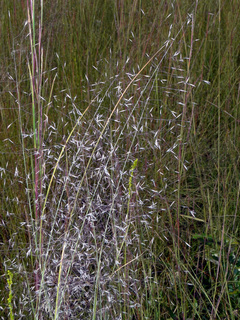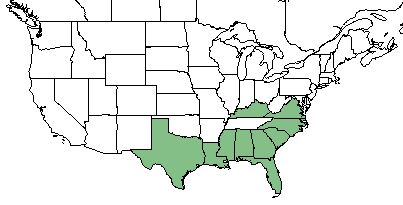Difference between revisions of "Muhlenbergia expansa"
(→Description) |
(→Distribution) |
||
| Line 27: | Line 27: | ||
==Distribution== | ==Distribution== | ||
| + | The southeastern region of the United States is the native range of ''M. expansa''; specifically in FLorida, Georgia, South Carolina, North Carolina, Virginia, Kentucky, Alabama, Mississippi, Louisiana, and Texas. <ref name= "USDA"> [https://plants.usda.gov/core/profile?symbol=CEAM USDA Plant Database]</ref> | ||
| + | |||
==Ecology== | ==Ecology== | ||
===Habitat=== <!--Natural communities, human disturbed habitats, topography, hydrology, soils, light, fire regime requirements for removal of competition, etc.--> | ===Habitat=== <!--Natural communities, human disturbed habitats, topography, hydrology, soils, light, fire regime requirements for removal of competition, etc.--> | ||
Revision as of 15:30, 24 May 2018
| Muhlenbergia expansa | |
|---|---|

| |
| Photo by Bobby Hattaway at Discoverlife.org | |
| Scientific classification | |
| Kingdom: | Plantae |
| Division: | Magnoliophyta - Flowering plants |
| Class: | Liliopsida - Moncots |
| Order: | Poales |
| Family: | Poaceae |
| Genus: | Muhlenbergia |
| Species: | M. expansa |
| Binomial name | |
| Muhlenbergia expansa Poir. | |

| |
| Natural range of Muhlenbergia expansa from USDA NRCS Plants Database. | |
Contents
Taxonomic Notes
Synonym: M. capillaris
Variety: none
Description
M. expansa is a perennial graminoid of the Poaceae family that is native to North America. [1]
Distribution
The southeastern region of the United States is the native range of M. expansa; specifically in FLorida, Georgia, South Carolina, North Carolina, Virginia, Kentucky, Alabama, Mississippi, Louisiana, and Texas. [1]